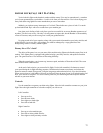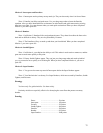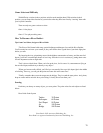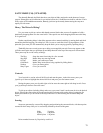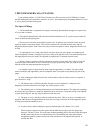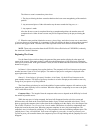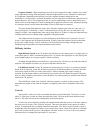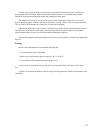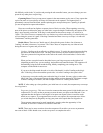VIDEO CHECKERS(TM) (1 PLAYER)
Learn winning checkers. ATARI Video Checkers(TM) offers you nine levels of difficulty in a game
that has challenged young and old for centuries. At level 1, the computer plays beginning checkers. At level
9, you’re playing a master of the game!
The Sport Of Kings
1. The checkerboard is composed of 64 squares, alternately light and dark, arranged in a square array
of 8 rows and 8 columns.
2. The official checkerboard of the American Checker Federation (ACF), consists of green and buff
colors for the dark and light squares.
6. Pieces are moved on the green (black) squares only. An ordinary move would be from one green
square to another vacant green square. This must be carried out in a forward direction only, and to a
diagonally adjacent square. Such a move may only be made one square at a time, diagonally forward, left
or right.
7. A capturing move or a jump is the transfer of a piece from one green square over another green
square (diagonally forward), occupied by a piece (or king) of the opposite color. The destination square in
the capturing move must be vacant. The captured or jumped piece is removed from the board.
8. When a player is presented with the opportunity to jump, he must jump. If he refuses to jump he
forfeits the game. When there are two or more ways to jump, a player may select any jump; he is not
required to take the jump capturing the most pieces.
9. A multiple capture or jump must be made when the opportunity is available. Any jump which
creates a multiple jump opportunity must be completed; there is no option to stop during any part of the
jumps.
10. Upon reaching the farthest forward row of the board by either an ordinary move or a capture, a
piece becomes a "king."
11. The ordinary move of the king includes the power to move backward. A king may move
diagonally forward or backward, left or right, one vacant square at a time.
12. The capturing move of a king includes the power of backward captures. The other rules regarding
how kings carry out captures or jumps are identical to those of the piece, except that a king is not required
to pause at the king row, but may jump in and out on the same turn.
13. The game is won by the player who can make the last move. That is, no move is available to his
opponent either because the opponent has no more pieces or kings, or because all of the opponent's pieces
or kings are blocked and unable to move.
14. A game is drawn when both players agree to terminate play with a drawn ("tie") result.
When one player proposes a drawn game, and the other does not agree, the first player may
request a "40-move" count. The count starts with the attacking player's first move after the request
and the counts only the moves of the attacking side. The attacking side must demonstrate a
strengthened position (in these 40 moves) to the satisfaction of an impartial third person, or
concede the draw.
80



